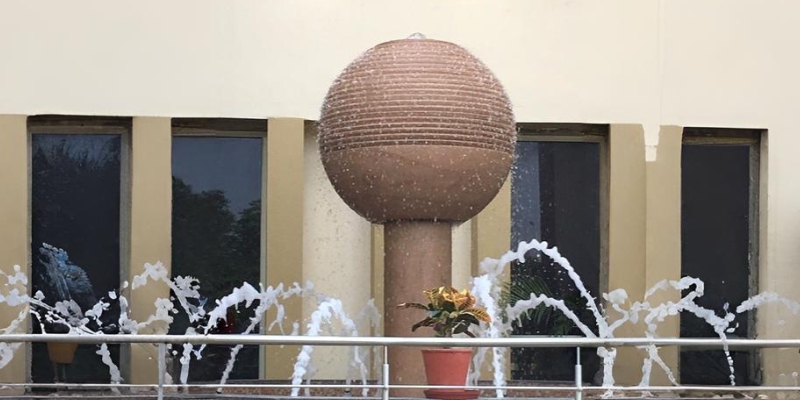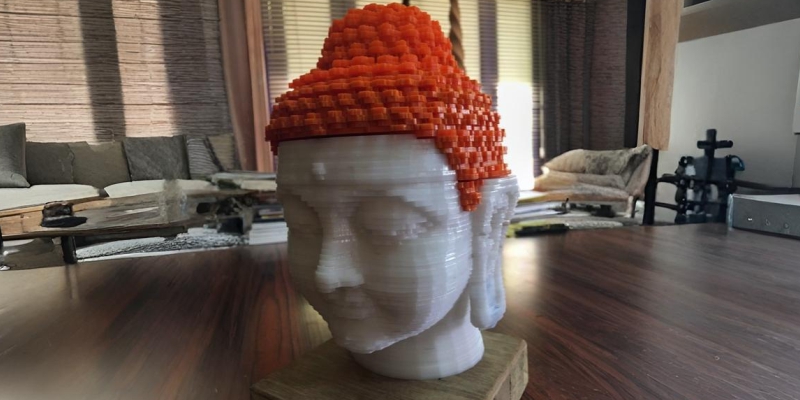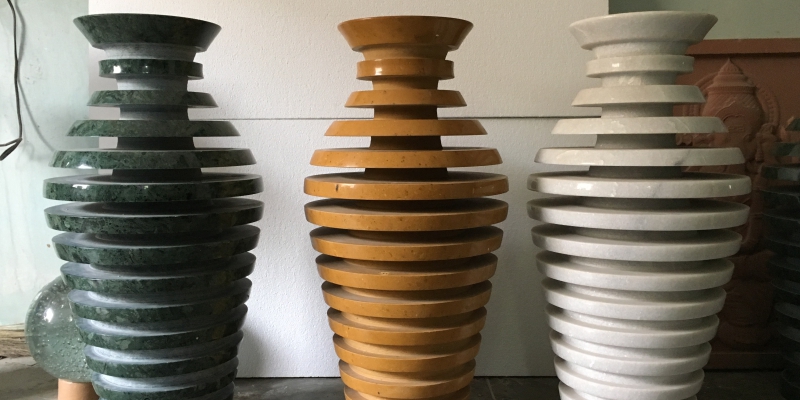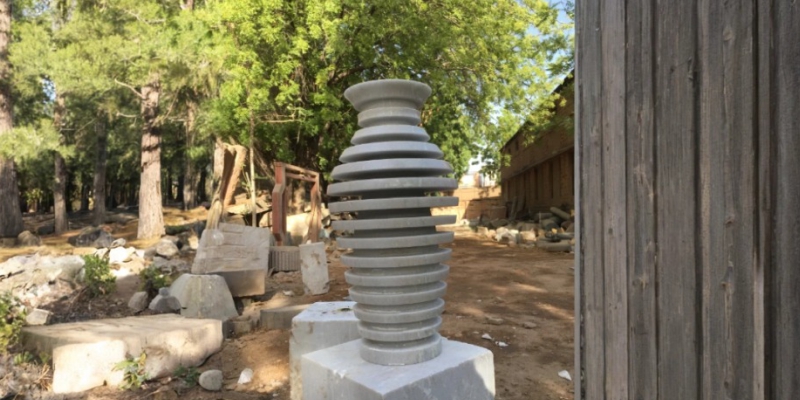India’s architectural heritage is a mesmerizing tapestry of history, spirituality, and craftsmanship. From the intricate carvings of Khajuraho to the majestic stone filigree of Dilwara Temples, every chisel mark tells a story. But what truly keeps this legacy alive today? Custom stone carving by artisans at Vishwakarma Shilp Karyalay.
Unlike mass-produced decor, hand-carved stonework carries the soul of the artisan, turning lifeless rock into expressions of devotion, culture, and artistry. Whether it’s a modern home seeking a touch of tradition or a heritage restoration project, custom stone carving bridges the past and present in the most beautiful way.
In this blog, let’s explore how this ancient craft continues to shape India’s architectural identity—and why it’s more relevant today than ever.

1. The Timeless Art of Stone Carving in India
Stone carving isn’t just a craft in India—it’s a sacred tradition. For centuries, skilled shilpis (sculptors) have transformed raw stone into divine idols, temple pillars, and royal palaces using nothing but hand tools and intuition.
At Vishwakarma Shilp Karyalay, we continue this lineage by infusing each piece with cultural depth and spiritual symbolism.
Temples & Spiritual Symbolism – The Meenakshi Temple’s towering gopurams, Konark’s sun chariot, and Ellora’s Kailasa Temple are all testaments to how stone carvings were used to depict gods, legends, and cosmic beliefs.
Royal Palaces & Havelis – Rajasthan’s jharokhas (stone windows) and Jaipur’s chhatris (domed pavilions) showcase how royalty used intricate carvings to display power and artistry.
Everyday Architecture – Even village stepwells, mandapas (pillared halls), and home entrances featured floral motifs and deity carvings for blessings.
Today, Vishwakarma Shilp Karyalay preserves these traditions while adapting to modern tastes through bespoke creations.

2. Why Custom Carving Over Mass-Produced Stonework?
In an era of machine-cut uniformity, custom stone carving by Vishwakarma Shilp Karyalay stands out because:
✔ Unique & Personalised – No two hand-carved pieces are identical. Whether it’s a family emblem, a deity idol, or a personalized jaali (lattice), the design carries deep meaning.
✔ Preserves Heritage Techniques – Our artisans use age-old methods passed down through generations, keeping endangered arts alive.
✔ Superior Craftsmanship – Unlike factory-made replicas, hand-carved stone has depth, texture, and a tactile warmth that machines can’t replicate.
✔ Eco-Friendly & Durable – Natural stone lasts centuries, making it a sustainable choice compared to synthetic décor.

3. Where Custom Stone Carving Enhances Modern Spaces
You don’t need a palace to incorporate stone carvings—they can elevate even contemporary homes and commercial spaces. Vishwakarma Shilp Karyalay offers elegant, custom solutions for all kinds of architectural visions:
🛕 Spiritual & Religious Spaces
- Home Temples – A custom-carved Ganesha, Krishna, or Durga idol becomes a family heirloom.
- Temple Renovations – Restoring ancient carvings or adding new ones in traditional styles keeps sacred art alive.
🏡 Residential Architecture
- Entrance Doors & Foyers – A carved Toran (doorway arch) or Ganesh Pattika welcomes positivity.
- Wall Panels & Jaalis – Stone jaalis offer privacy while allowing light and airflow—perfect for balconies and courtyards.
- Garden Sculptures – Stone benches, fountains, or Buddha statues add serenity to outdoor spaces.
🏨 Commercial & Hospitality Spaces
- Heritage Hotels – Restored havelis and palaces use original carvings to maintain authenticity.
- Restaurants & Cafés – A stone-carved bar counter or partition wall adds a rustic-chic vibe.
- Corporate Lobbies – Custom emblems or cultural motifs in stone reflect brand identity with tradition.

4. The Process: From Stone to Sculpture
Ever wondered how a rough block becomes art? At Vishwakarma Shilp Karyalay, every sculpture begins with vision and is shaped by generations of expertise.
Step-by-Step:
- Stone Selection – Artisans choose marble, sandstone, granite, or soapstone based on design requirements.
- Design & Tracing – The pattern is sketched or stenciled onto the stone.
- Rough Shaping – Hammers and chisels remove excess material to form a basic outline.
- Detailing – Fine tools carve facial expressions, motifs, and textures.
- Finishing – Polishing, sanding, and sometimes waxing enhance the stone’s natural beauty.
Each project is a labor of love—some carvings take months to perfect.

5. Challenges & the Fight to Keep the Craft Alive
Despite its beauty, traditional stone carving faces serious threats:
⚠ Declining Artisan Numbers – Many young craftsmen switch to easier jobs, risking the loss of ancestral skills.
⚠ Cheap Imitations – Machine-made replicas undercut authentic hand-carved work.
⚠ Lack of Awareness – Few homeowners know they can commission custom pieces instead of buying generic decor.
How Can We Help?
- Support Local Artisans – Commission directly from trusted names like Vishwakarma Shilp Karyalay.
- Promote Heritage Craft – Share their work, visit craft fairs, and educate others.
- Blend Tradition with Modernity – Use carvings in contemporary ways (e.g., stone tabletops, minimalist wall art).

6. The Future: Can Tradition & Modernity Coexist?
Absolutely! Architects and designers are finding innovative ways to integrate stone carvings:
- Fusion Interiors – A sleek apartment with a carved stone accent wall.
- Public Art Installations – Modern sculptures using traditional motifs.
- Digital Customization – At Vishwakarma Shilp Karyalay, we even accept digital designs for precision carving—without losing the hand-crafted essence.
The key? Respecting the craft while adapting it to today’s aesthetics.
Final Thoughts: Stone Carving Isn’t Just Art—It’s Legacy
In a fast-changing world, custom stone carving by Vishwakarma Shilp Karyalay is more than decoration—it’s a bridge between generations. Every chisel stroke carries history, devotion, and an artisan’s heartbeat.
Whether you’re building a home, designing a hotel, or simply appreciating heritage, consider supporting this timeless craft. Because when we keep tradition alive, we don’t just decorate spaces—we tell stories that outlast us.
What’s your favorite example of Indian stone carving? Share in the comments!
Loved this piece? Share it with someone who appreciates art, architecture, and India’s cultural heritage!
Explore more or commission your own masterpiece at Vishwakarma Shilp Karyalay.



Leave a comment